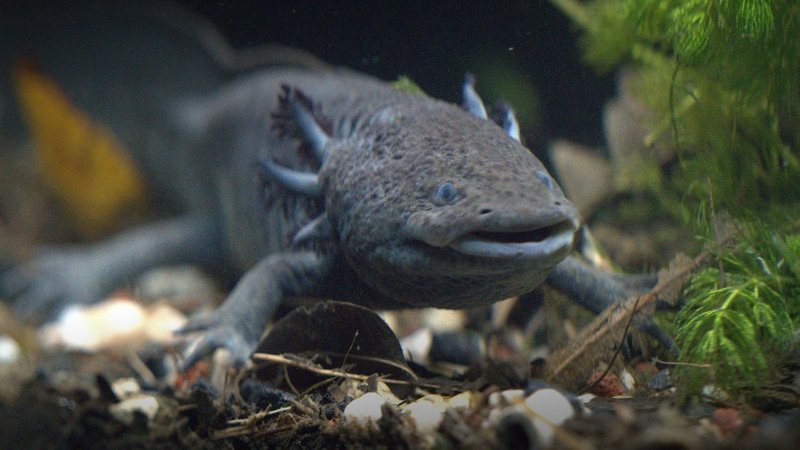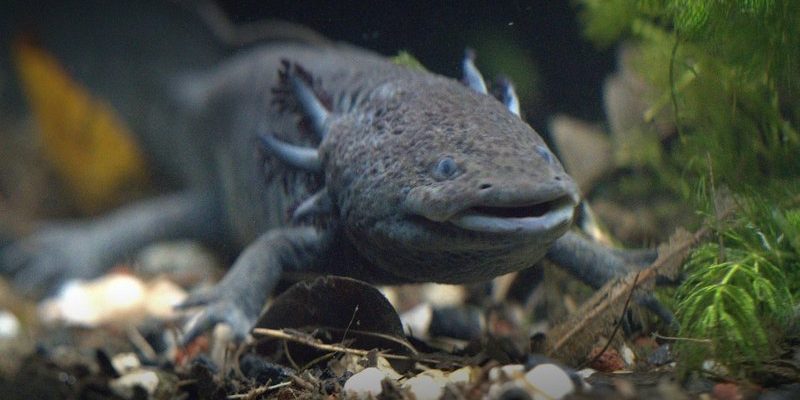
At first glance, the axolotl might seem like an ordinary salamander, but it’s far from ordinary. This little critter is a neotenic species, which means it retains its juvenile features throughout its entire life. Instead of hopping onto land as most salamanders do, axolotls spend their days swimming around in water, sporting those iconic external gills. Their story starts in the cool, clear waters of Mexico City, specifically in the ancient lake of Xochimilco. Unfortunately, these unique environments have shrunk drastically over time, but the axolotl’s history is rich and complex, intertwined with both human influence and natural adaptation.
The Origins of the Axolotl: A Historical Perspective
To understand the axolotl’s evolutionary journey, we need to travel back millions of years. The axolotl is a member of the Ambystomatidae family, which includes the tiger salamander. They share a common ancestor who lived around 170 million years ago. Here’s where it gets interesting: while many amphibians evolved to thrive on land, the axolotl took a different path by staying aquatic. This choice allowed it to develop some truly remarkable traits.
Over time, scientists believe that the axolotl’s evolutionary history diverged from its terrestrial cousins about 10 million years ago. As the climate and environmental conditions changed, the axolotl adapted by developing features suited for life in water, such as its external gills and regenerative capabilities. Imagine being a creature that can regrow lost limbs! That’s like having a superpower in the animal kingdom, and it all stems from its unique evolutionary adaptations.
Neoteny: The Secret to the Axolotl’s Charm
So, what exactly is neoteny, and why is it so important for the axolotl? Neoteny is a fascinating biological phenomenon where an organism retains juvenile characteristics into adulthood. While most amphibians undergo metamorphosis—changing from a tadpole to a terrestrial adult—the axolotl skips this step entirely. Instead, it remains in its larval stage, keeping its gills and aquatic lifestyle.
This neotenic trait isn’t just for looks; it’s also a survival strategy. By staying aquatic, axolotls can avoid some of the dangers that land-dwelling creatures face, such as predators and environmental changes. You might be wondering how this works in their favor. Essentially, they can reproduce while still being in a state that allows them to thrive in the water. As a result, they’ve managed to survive and even flourish where others have not.
The Axolotl’s Amazing Regenerative Abilities
Picture this: you accidentally cut your finger while cooking, and instead of healing in weeks, it regenerates in just a day! This might sound like science fiction, but it’s reality for axolotls. Their ability to regenerate not just limbs but also parts of their heart, brain, and even spinal cord is remarkable.
Research into their regenerative powers has intrigued scientists for years. Some studies suggest that axolotls can regrow limbs due to specialized cells called blastemal cells, which can transform into any cell type required for regeneration. This unique capability makes axolotls a focal point in regenerative medicine research. By understanding how they do it, scientists hope to uncover secrets that could benefit human healing processes.
The Impact of Urbanization and Habitat Loss
While axolotls are fascinating, their future is fraught with challenges. Urbanization has dramatically impacted their natural habitat, particularly in Mexico City, where Xochimilco has suffered from pollution, introduced species, and urban expansion. With their environment shrinking, the axolotl faces threats to its survival.
Conservation efforts have ramped up in recent years. Organizations are now working to protect remaining habitats and breed axolotls in captivity. These efforts are crucial not just for saving the species but also for maintaining biodiversity. It’s like putting together a jigsaw puzzle—every piece is important, and without the axolotl, we lose part of the picture.
Why Axolotls Matter to Science and Culture
The axolotl’s quirky features and regenerative abilities make it a valuable asset in scientific research. Its cells provide insight into regenerative processes that could one day offer breakthroughs in human medicine. Imagine a world where injuries heal as quickly and completely as an axolotl’s limb regrowth!
Culturally, the axolotl holds a special place in Mexican heritage. It is linked to the Aztec mythology of the god Xolotl, the god of lightning and death, who transformed into an axolotl to escape capture. This cultural significance enhances the axolotl’s allure, making it more than just a scientific marvel. It’s a symbol of resilience, survival, and the delicate balance of ecosystems.
The evolutionary history of the axolotl is a captivating tale of adaptation, survival, and connection to both nature and culture. As we look to the future, the axolotl remains a reminder of the importance of biodiversity and the need to protect our natural heritage. Understanding its history helps us appreciate not just this unique creature but also the world around us.
In a way, the axolotl’s story is like ours—filled with challenges and triumphs, constantly evolving. So the next time you see one of these charming creatures, remember the deep evolutionary journey behind its smile. Who knows? Maybe one day, we’ll unlock even more secrets from their incredible biology.

